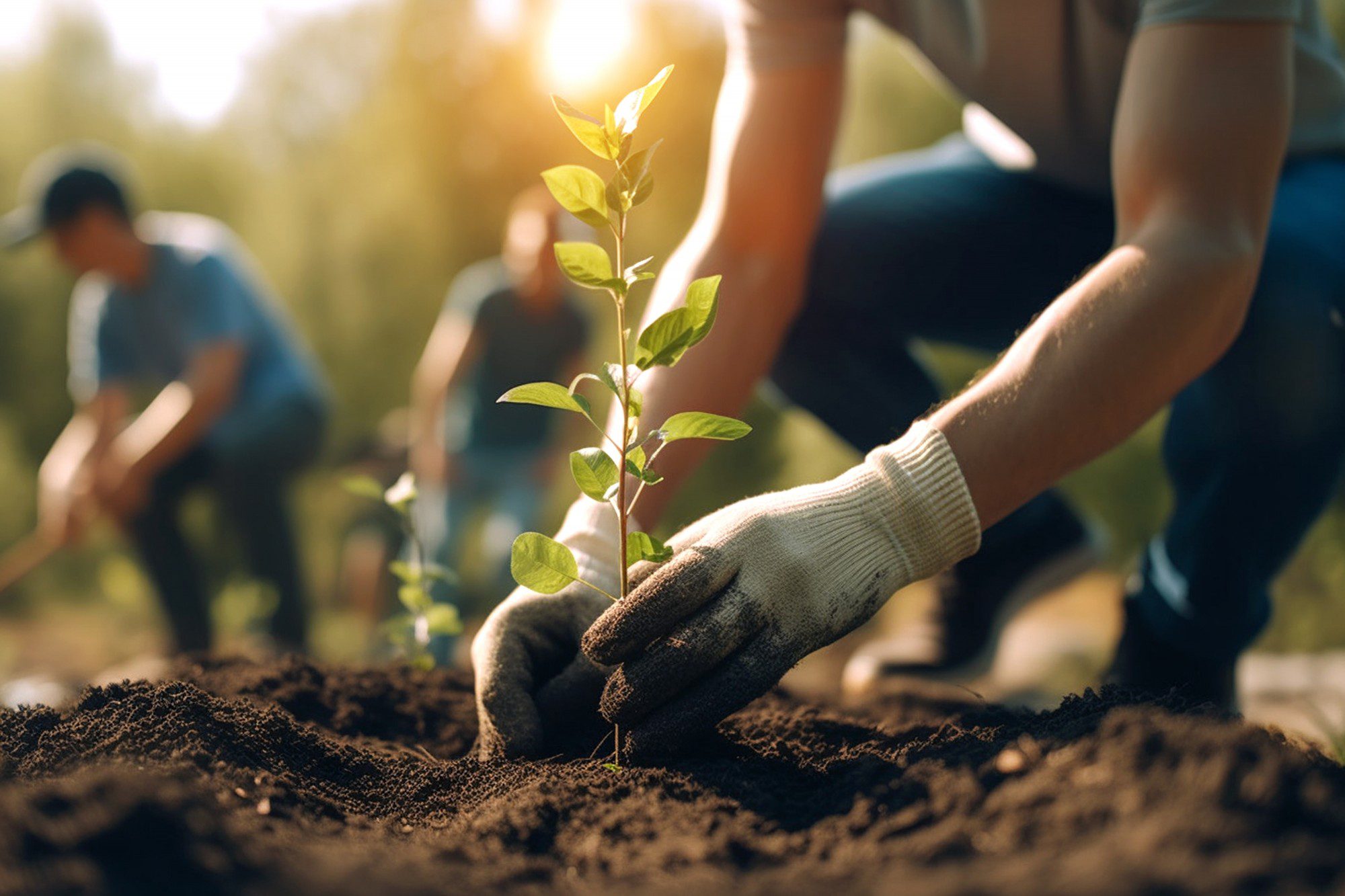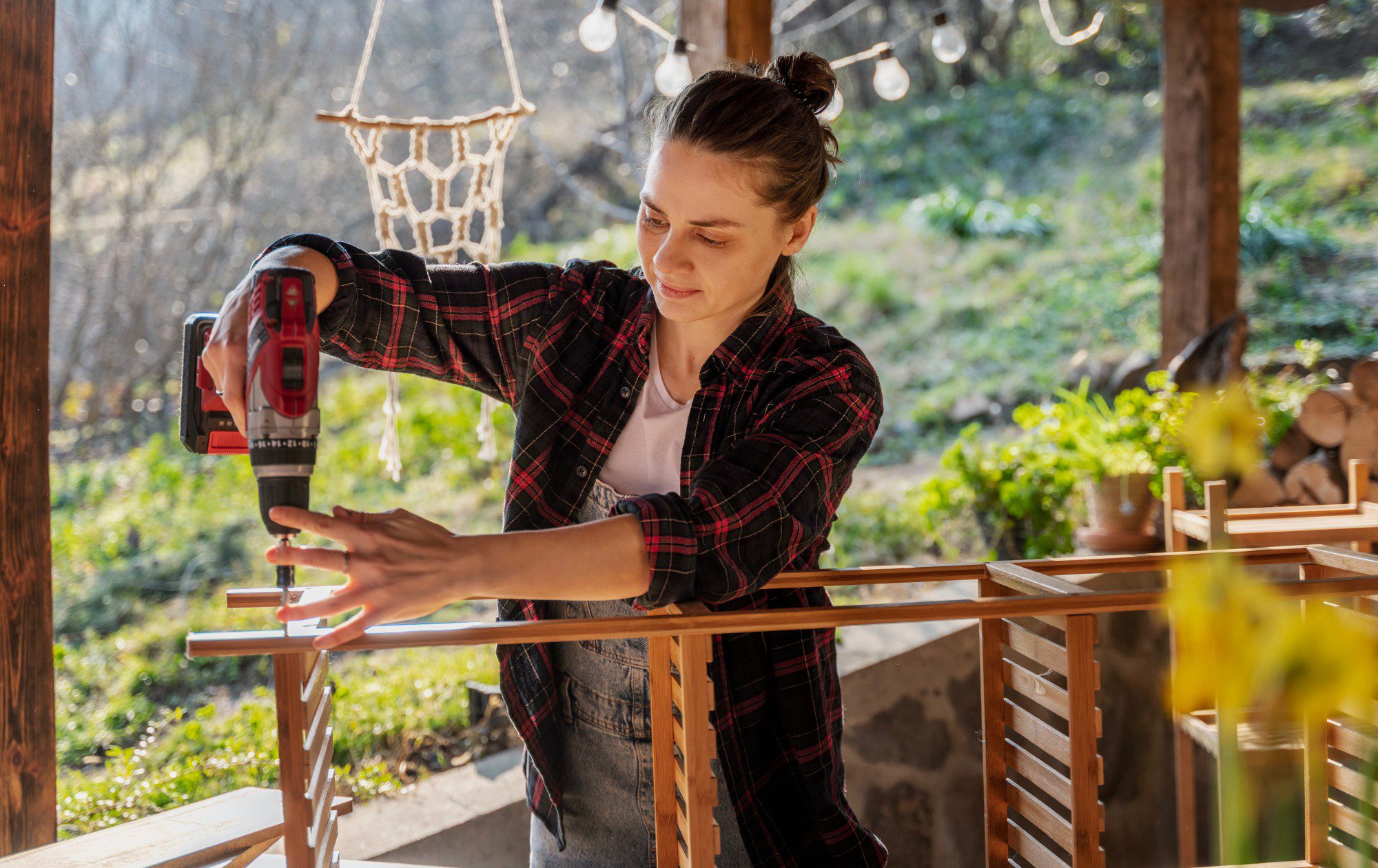
Transforming Outdoor Spaces: Sustainable Landscaping and Hardscaping
Sustainable landscaping prioritizes the health of your environment, making your home a more comfortable, happier place to live. It involves minimizing the use of things that negatively impact the ecosystem while also amplifying the beauty and functionality of your landscape.
Whether you have just enough outdoor space for a small garden or several acres, there are plenty of ways to create a more eco-friendly environment. In this post, we’ll explore why sustainable landscaping matters and how to improve your outdoor space.
Let’s get started!
Why Does Sustainable Landscaping Matter?
 Urban and agricultural expansion can lead to the destruction of habitats and harm our biodiversity. As we continue to grow, we consume more resources and generate larger amounts of waste. Using eco-friendly practices can help prevent air, water, and soil pollution and preserve our local ecosystem. We can also strike a healthy balance between our activities in the natural world in a way that minimizes habitat loss.
Urban and agricultural expansion can lead to the destruction of habitats and harm our biodiversity. As we continue to grow, we consume more resources and generate larger amounts of waste. Using eco-friendly practices can help prevent air, water, and soil pollution and preserve our local ecosystem. We can also strike a healthy balance between our activities in the natural world in a way that minimizes habitat loss.
However, sustainable landscaping doesn’t just improve the environment — it also contributes to your health and well-being. Here’s how:
- Improved Air Quality: Trees, shrubs, and other types of vegetation act as natural air filters. They absorb carbon dioxide and other pollutants and release oxygen, making breathing the air around your property cleaner. As a result, you’re less likely to have allergies and respiratory issues.
- Improved Mental Health: Even if you’ve spent your whole life in a city, humans have an inherent connection with nature. Green spaces are proven to boost your mood, feelings of relaxation, and enhance your psychological well-being.
- Less Noise: Water features and dense vegetation can reduce noise pollution by creating a calming buffer and a quieter, more peaceful environment.
- Better Sleep: Sustainable landscapes promote feelings of calm and stress reduction. The more relaxed you are, the easier time it’ll be for you to sleep.
- Improved Cognitive Function: Biophilic designs mimic nature by incorporating natural elements in your indoor and outdoor space. Studies have repeatedly shown that these elements can improve productivity, creativity, and cognitive function.
These are just some of the benefits of sustainable landscaping. Do you want to enjoy a space that’s healthier for you mentally, physically, and psychologically? Doing so is easier than you think! Here’s how to transform your outdoor space:
1. Stick With What’s Natural
 Native plants naturally grow in a specific area and are well-suited for your soil, wildlife, and overall climate. Adding native plants to your landscape comes with several benefits. Since they’re used to the environment, they require less water once planted, which helps you conserve water. They’re also less maintenance than foreign or exotic plants because they have already adapted to the environment. You won’t have to water, fertilize, and prune them as often.
Native plants naturally grow in a specific area and are well-suited for your soil, wildlife, and overall climate. Adding native plants to your landscape comes with several benefits. Since they’re used to the environment, they require less water once planted, which helps you conserve water. They’re also less maintenance than foreign or exotic plants because they have already adapted to the environment. You won’t have to water, fertilize, and prune them as often.
Native plants also tend to be more resistant to local pests and diseases because they’ve evolved with them and have developed natural defenses against them. You’ll be less likely to resort to using herbicides and pesticides, which can hurt you, your children, and your pets.
2. Start Composting
 Don’t throw food waste, leaves, and grass clippings in the trash. Compost them instead! Composting helps recycle waste and enriches your garden soil with the nutrients it needs for things to grow. To expedite the composting process, keep your pile moist, add to it regularly, and turn it every few days.
Don’t throw food waste, leaves, and grass clippings in the trash. Compost them instead! Composting helps recycle waste and enriches your garden soil with the nutrients it needs for things to grow. To expedite the composting process, keep your pile moist, add to it regularly, and turn it every few days.
3. Practice Sustainable Soil Management
Speaking of compost, another way to improve your landscape is by prioritizing your soil’s health. Savvy soil management can improve your soil’s structure and its ability to retain water. Compost can enrich your soil and encourage microbial activity, while pH management enhances plant growth and performance.
4. Implement Savvy Water Practices and Usage
 Being wise about water usage is excellent for the environment and utility bill. If you can, install a drip irrigation system. These deliver water straight to your plant’s roots, reducing runoff and evaporation. For extra credit, consider installing smart irrigation controllers that adjust water usage based on your weather conditions.
Being wise about water usage is excellent for the environment and utility bill. If you can, install a drip irrigation system. These deliver water straight to your plant’s roots, reducing runoff and evaporation. For extra credit, consider installing smart irrigation controllers that adjust water usage based on your weather conditions.
Another way to save on water is by harvesting it. By creating or purchasing a rain barrel, you can collect rainwater, which you can use indoors and out for your plant life.
5. Harness Your Hardscapes
 Hardscapes are your landscape’s man-made, non-living elements. These include things like your patios, fences, sculptures, statues, retaining walls, and more. Hardscapes provide your outdoor areas with structure, functionality, and aesthetic appeal. Unfortunately, home designers don’t always create hardscapes with the environment in mind. Traditional hardscape surfaces, like concrete, are impermeable and can cause rainwater to run off, potentially leading to erosion, flooding, and pollution.
Hardscapes are your landscape’s man-made, non-living elements. These include things like your patios, fences, sculptures, statues, retaining walls, and more. Hardscapes provide your outdoor areas with structure, functionality, and aesthetic appeal. Unfortunately, home designers don’t always create hardscapes with the environment in mind. Traditional hardscape surfaces, like concrete, are impermeable and can cause rainwater to run off, potentially leading to erosion, flooding, and pollution.
Permeable hardscapes can reduce runoff by allowing water to recharge your groundwater surfaces. In addition, they can filter out pollutants from the water as it infiltrates, improving water quality. When designed with intention, your hardscape can also:
- Reduce surface temperatures
- Promote healthier soil
- Provide better drainage
- Seamlessly integrate with the rest of your landscape
6. Install LEDs
LEDs have become the standard these days. ENERGY STAR LEDs last 25 times longer than standard incandescent lighting and use 75% less energy. They’re also more durable and deliver better quality lighting than their competitors, which is particularly important when using them for your outdoor space. If you’re not using LEDs, now’s the time to switch!
7. Integrate Recyclable Materials
 Whether you’re creating a table and chairs, building a plant bed, or even making a children’s outdoor playset, use recyclable materials wherever you can. Recycled plastic makes perfect outdoor furniture, like tables and chairs, because it’s weather-resistant and low-maintenance. Incorporate renewable sources like bamboo, wood, and stone wherever it makes sense, and don’t be afraid to get creative with materials like scrapped metal and tires. You never know where your imagination can take you!
Whether you’re creating a table and chairs, building a plant bed, or even making a children’s outdoor playset, use recyclable materials wherever you can. Recycled plastic makes perfect outdoor furniture, like tables and chairs, because it’s weather-resistant and low-maintenance. Incorporate renewable sources like bamboo, wood, and stone wherever it makes sense, and don’t be afraid to get creative with materials like scrapped metal and tires. You never know where your imagination can take you!
Improve Your Sustainable Landscaping With Pathway
At Pathway, we specialize in healthy homes for a healthy you. Whether you’re remodeling your basement or your outdoor space, we prioritize sustainable solutions that are eco-friendly and energy-efficient. We manage the entire remodeling process from initial design to construction and will work closely with you to develop customized solutions that best fit your budget and lifestyle.
Are you ready to transform your outdoor space into a beautiful, functional, sustainable environment? Send us a message today!
Do you like home remodeling tips?
Remodeling your home can be a daunting experience. The Pathway team has taken the time and expertise to create podcast episodes detailing the tips and tricks of the trade.
